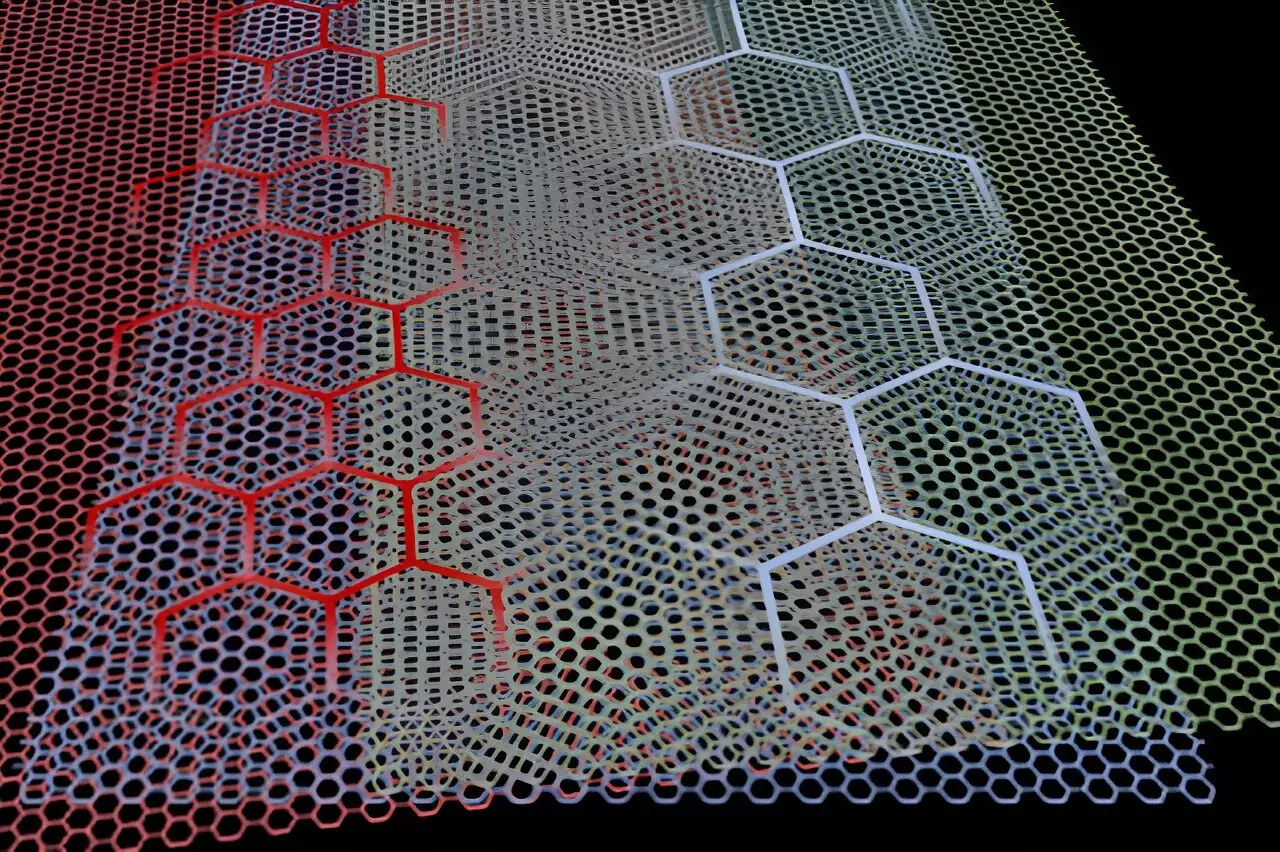Quasicrystals, a mysterious class of materials, have long captivated the curiosity of scientists. Now, a groundbreaking study conducted by researchers at MIT has unveiled a simple, yet flexible method to create atomically thin versions of quasicrystals. Published in the esteemed journal Nature, the study not only sheds light on the properties of these enigmatic materials but also paves the way for exploring novel phenomena with potential applications in diverse fields. By merging the fields of quasicrystals and twistronics, the study opens up a realm of possibilities for understanding superconductivity and harnessing its potential for electronic devices.
Making Unexpected Connections: Twistronics and Quasicrystals
Twistronics, a field pioneered by MIT Professor Pablo Jarillo-Herrero, involves stacking atomically thin layers of materials and rotating them at a slight angle to create a moiré superlattice. This unique pattern has a profound impact on the behavior of electrons, altering their energy levels and giving rise to fascinating phenomena. In the recent study, the researchers explored the fusion of twistronics and quasicrystals, uncovering remarkable insights into the field.
Unveiling the Moiré Quasicrystal
During their experiments, the scientists constructed a moiré system consisting of three layers of graphene. By twisting two of the graphene layers at different angles, they unexpectedly generated a quasicrystal. Quasicrystals exhibit unusual patterns that lie between the regular repeating structure of crystals and the randomly jumbled arrangement of amorphous materials. However, compared to their crystalline and amorphous counterparts, quasicrystals remain relatively unexplored, primarily due to the challenges associated with their fabrication.
The team’s groundbreaking achievement serves as a new platform for delving into the previously elusive world of quasicrystals. This relatively simple method opens doors to studying their electronic properties, which have been largely overlooked in the past. The researchers collaborated with Professor Ron Lifshitz of Tel Aviv University, a renowned expert in the field of quasicrystals. With his guidance, they gained a deeper understanding of the moiré quasicrystal and its unique properties.
One of the remarkable findings of the study was the ability to induce superconductivity in the moiré quasicrystal. Superconductivity, the phenomenon in which electrons flow through a material with zero resistance, holds immense potential for enhancing the efficiency of electronic devices. By gaining insights into the mechanism behind superconductivity in the moiré quasicrystal system, researchers can explore new avenues for developing more efficient electronic devices.
Unraveling Symmetry Breaking
The team also uncovered evidence of symmetry breaking in the moiré quasicrystal system. This phenomenon suggests strong electron-electron interactions, which are crucial in manifesting exotic physics. By further investigating these interactions, physicists and quantum material scientists can unlock a wealth of untapped potential in the field.
A Puzzle Yet to Be Fully Deciphered
While the study has provided valuable insights into the moiré quasicrystal system, there are still mysteries to unravel. Aviram Uri, one of the co-first authors of the paper, emphasizes that while progress has been made, a complete understanding of the system is still elusive. Ongoing discussions and research efforts across continents aim to shed light on the remaining puzzles and deepen our comprehension of this fascinating field.
The discovery of a simple and accessible method to create atomically thin quasicrystals opens up new horizons in materials science. With the ability to create tailored moiré systems and manipulate the number of electrons, researchers can engineer specific behaviors and delve into uncharted territories of quantum materials. This newfound understanding of quasicrystals and their electronic properties holds promise for revolutionizing various fields, from electronics to energy storage.
The exploration of quasicrystals has taken a significant leap forward with the emergence of a simple method to create atomically thin versions. Through the fusion of twistronics and quasicrystals, researchers have unlocked unprecedented insights into the properties of these fascinating materials. The discovery of superconductivity and symmetry breaking in the moiré quasicrystal system deepens our understanding of exotic physics and opens doors to transformative applications. As scientists continue to decipher the remaining mysteries, the future of quasicrystal research holds immense potential for advancing materials science and shaping the technologies of tomorrow.


Leave a Reply